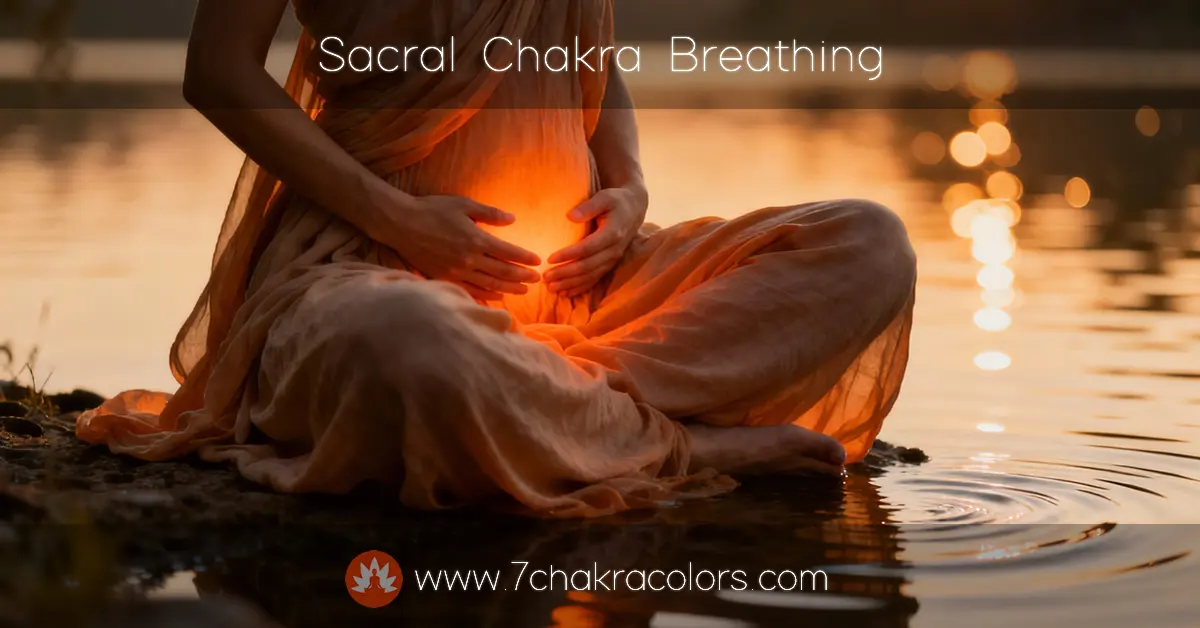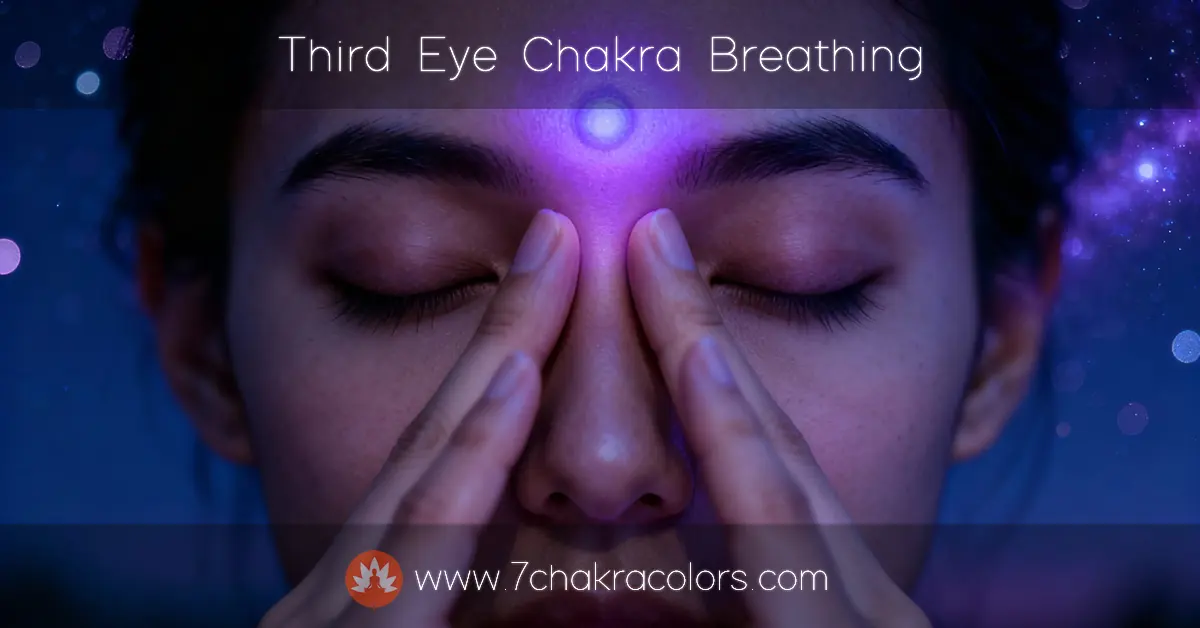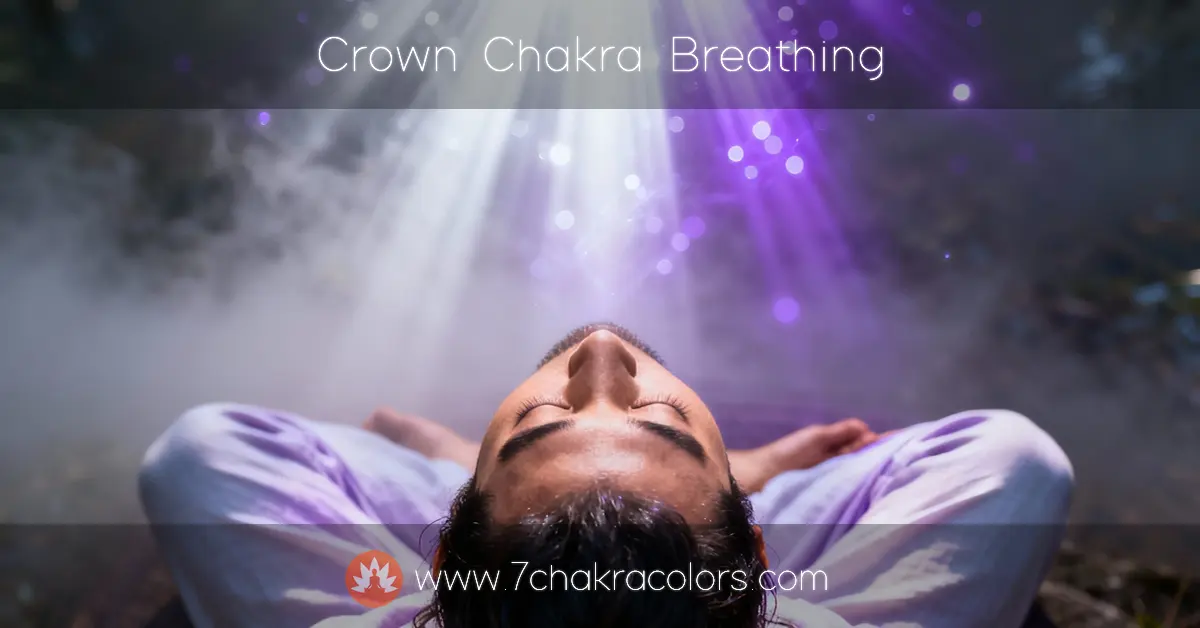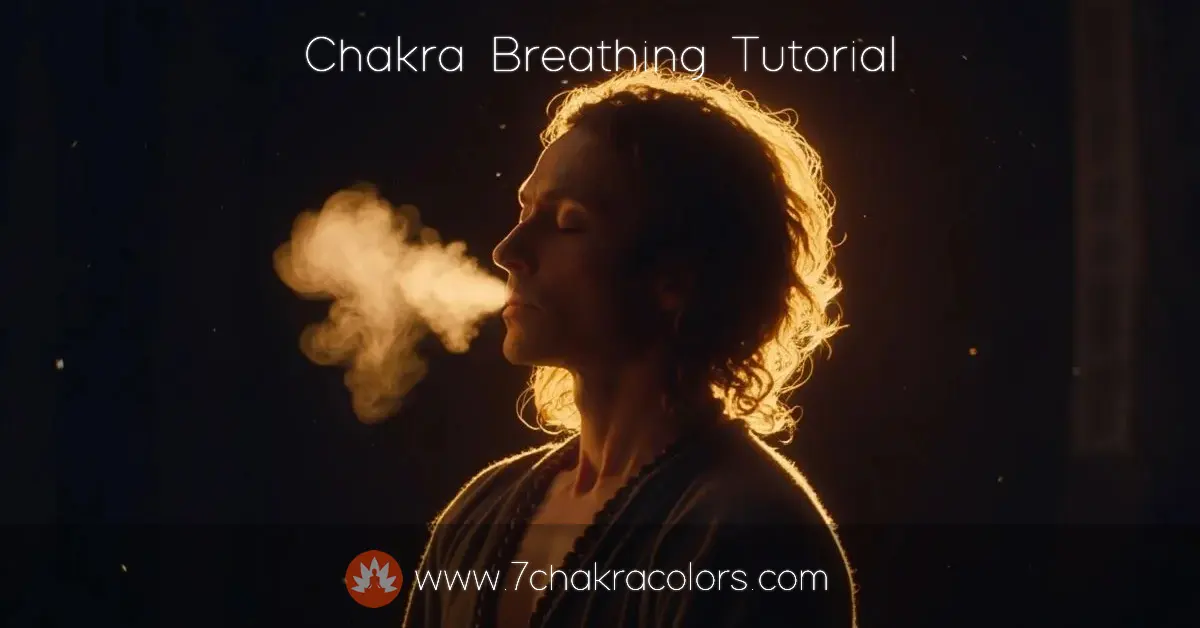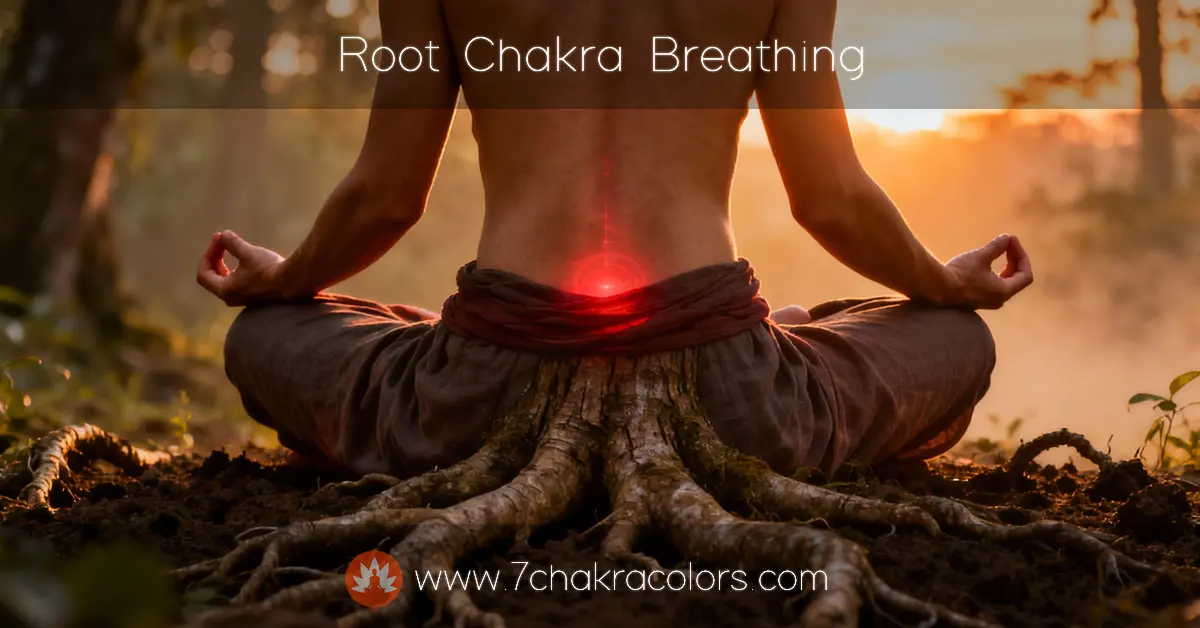
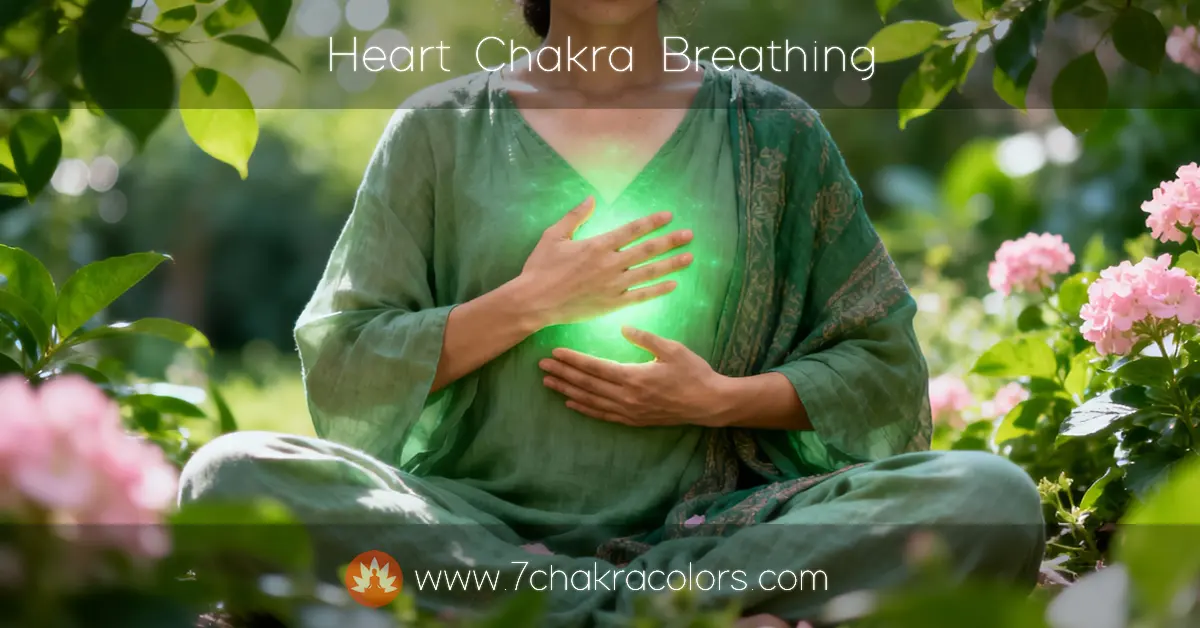
Discover powerful heart chakra breathing exercises that open your heart center in minutes. Learn 7 techniques from gentle to intense for love, compassion, and emotional healing.
Your heart center sits in the middle of your chest. Not where your physical heart beats - right at your sternum, between your ribs. When it's blocked, love can't move. Not just romantic love. Any connection, compassion, ability to feel warmth toward yourself or anyone else.
Heart chakra breathing changes that fast. These techniques open your chest, release what's stuck there, let love flow again. The tightness loosens. That guarded feeling eases back.
Here's what you'll learn:
To see the complete list of all breathing exercises, read our comprehensive tutorial about chakra breath.
The heart chakra - Anahata in Sanskrit - governs everything related to connection. Love, compassion, forgiveness, empathy. Your capacity to give and receive affection. To trust. To let people in.
Located at your sternum, in the center of your chest. Associated with green energy and the air element. When it's open, relationships feel natural. You can be vulnerable without becoming defensive. Show up authentically. Accept love without questioning whether you deserve it.
When it's blocked? The symptoms show up everywhere.
Emotional walls that won't come down no matter how safe someone seems. Trust issues that sabotage every relationship. Either giving too much - draining yourself trying to earn love - or giving nothing because vulnerability feels dangerous. Holding grudges you can't release even when you want to. That chronic tightness in your chest that doctors can't explain.
Your body reflects heart chakra problems clearly. Chest tightness or pain with no medical cause. Breathing that stays shallow no matter what you try. Shoulder tension that massage barely touches. Issues with your lungs or circulation.
That feeling like something's squeezing your chest - especially during emotional moments. The physical manifestation of a closed heart.
Air is the heart chakra's element. Every breath expands your chest, moves energy through this center. When you breathe consciously into your heart space, you're doing more than oxygenating your blood.
You're creating expansion where there was contraction. Movement where energy was stuck. Each inhale brings fresh energy. Each exhale releases what needs to go - old hurts, protective patterns, the armor you've been carrying.
Breathing exercises for heart chakra work because they combine physical expansion with energetic intention. Your chest literally opens with each breath. The guarding softens.
Start here. This builds the foundation for everything else.

Sometimes the shift happens immediately. That locked-down feeling in your chest loosens. You remember what openness feels like - not vulnerability that scares you, but genuine receptivity.
Other times it builds gradually. After consistent practice, you notice you're less defensive. Someone shows affection and you don't immediately question their motives. You can express care without overthinking whether it's too much.
This technique balances your nervous system while opening your heart chakra. The rhythm matters - it shifts you from stress response to rest and connection.
The 4-7-8 pattern activates your parasympathetic nervous system - the rest and digest mode where connection becomes possible. When you're stressed, your heart closes protectively. This breathing pattern signals safety, letting your heart soften.
Use it when you're about to have a vulnerable conversation. Before seeing someone you have complicated feelings about. After arguments when you're still defended and can't soften. When someone's trying to show you love but you can't let it in.
This combines breath with visualization for deeper heart chakra activation.
Green is the heart chakra's primary color - representing growth, healing, renewal. When you can't access loving feelings naturally, visualization creates the energetic pattern. Your nervous system responds to imagination as if it's real. The heart chakra begins opening.
This ancient practice combines breath with phrases of loving-kindness. Powerful for dissolving the walls around your heart.
This practice doesn't require you to suddenly love difficult people. It creates energetic openness in your heart chakra by practicing the movement of compassion. Over time, that movement becomes more natural.
Sound creates vibration. This technique uses your voice to activate your heart chakra directly.
The vibration from humming literally massages your heart center from the inside. Creates movement where energy was stuck. Many people feel immediate warmth or tingling after just a few rounds.
This advanced technique moves energy from your heart down into your lower chakras, grounding the love and openness you're cultivating.
When your heart opens without grounding, you can become emotionally unstable - crying at everything, giving away too much energy, boundaries disappearing completely. This technique keeps your heart opening connected to your body and earth energy.
This pranayama balances your left and right energy channels, which converge at the heart chakra. When these channels are balanced, your heart opens naturally.
Alternate nostril breathing calms your nervous system, balances your brain hemispheres, and creates harmony in your energy body. When your system is balanced, your heart can open without fear.
Every chakra has a seed sound. For the heart chakra, it's YAM (pronounced "yum"). The vibration resonates at this chakra's frequency.
The YAM mantra activates your heart chakra faster than breath alone. You'll feel the resonance building, the stuck energy starting to move.
Each technique serves different purposes. Here's how they stack up:
| Technique | Best Used For | Difficulty Level | Time Needed |
|---|---|---|---|
| Basic Heart-Centered Breathing | Daily practice, beginners, building foundation | Beginner | 5-10 minutes |
| 4-7-8 Breath | Calming anxiety, before vulnerable moments, nervous system regulation | Beginner | 2-4 minutes |
| Green Light Breathing | Visualization practice, when can't access loving feelings naturally | Beginner | 10-15 minutes |
| Compassion Breathing (Metta) | Dissolving resentment, practicing forgiveness, expanding love | Intermediate | 15-20 minutes |
| Humming Breath | Physical heart opening, immediate activation, releasing stuck energy | Beginner | 3-5 minutes |
| Alternate Nostril Breathing | Balance, calming mind, preparing for heart opening | Intermediate | 5-10 minutes |
| Breathing Through Heart Into Belly | Grounding heart energy, preventing emotional overwhelm, sustainability | Intermediate | 10-15 minutes |
| YAM Mantra | Direct chakra activation, sound healing, deep work | Beginner | 5-10 minutes |
Morning works well - setting an open, loving tone for your day. But these techniques are useful anytime your chest feels tight, your emotions are locked down, or connection seems impossible.
Before difficult conversations. When you're holding a grudge you want to release but can't. After arguments when you're still defended and can't soften. When someone's trying to show you love but you can't let it in.
Five minutes of basic heart-centered breathing or 4-7-8 breath before emotional situations changes everything. Your nervous system shifts from defended to open. The conversation goes differently.
Heart chakra breathing exercises become more powerful when paired with complementary practices. Do your breathwork, then practice heart chakra meditation to deepen the opening. Use green crystals like rose quartz or green aventurine during your breathing practice.
Backbends in yoga naturally open your chest - combine them with conscious breathing into your heart center. Write in a gratitude journal after your practice, reinforcing the open, loving energy you've cultivated.
Many symptoms indicate the heart chakra is opening. You'll notice shifts in how you relate to yourself and others.
Vulnerability becomes less terrifying. You can share feelings without armor, knowing that even if someone responds poorly, you'll survive. Walls that have been up for years start coming down - not all at once, but gradually.
Compassion appears more naturally. For yourself first, usually. You stop being so harsh about mistakes. Then for others - their behavior still bothers you, but you can see their pain underneath without taking everything personally.
Forgiveness becomes possible. Not forced, performative forgiveness. Genuine release of resentments you've carried for years. They just stop mattering as much.
You can accept love. When someone shows affection, you don't immediately question it, push it away, or convince yourself you don't deserve it. You just receive it.
Your chest literally feels more open. That chronic tightness releases. Breathing becomes deeper without effort - your ribs expand more freely.
Shoulder tension decreases. The protective hunching forward relaxes. You stand differently, chest more open, shoulders back naturally.
Sleep often improves. When your heart chakra is blocked, you carry emotional tension into sleep. As it opens, that tension releases.
Forcing emotional release during practice. If tears come, let them. But don't pressure yourself to feel something specific. Heart opening happens in its own time.
Practicing only when you're already in emotional crisis. These techniques work better as regular maintenance. Build openness before you desperately need it.
Expecting immediate transformation. One breathing session helps, but lasting heart opening requires consistent practice. Your protective patterns developed over years. They don't dissolve in ten minutes.
Confusing heart opening with becoming a doormat. An open heart doesn't mean no boundaries. It means being able to say no without shutting down completely, setting limits without building walls.
Start with basic heart-centered breathing. Five minutes every morning for one week. Just building the habit of bringing awareness to your heart center.
Week two, add 4-7-8 breath when you feel stressed or defended. Notice how it shifts your state.
Week three, incorporate one of the sound techniques - humming breath or YAM mantra. Feel the vibration activating your heart chakra.
Week four, try the compassion breathing practice. Start with loving-kindness toward yourself. Work up to difficult people gradually.
Track subtle changes. "Didn't shut down completely during that conversation" or "Felt warmth toward myself without immediately negating it" or "Let someone help me without pushing them away." Small shifts compound into transformed relationships.
Everything requiring connection, vulnerability, or love flows through your heart chakra. When it's closed, you can't access those capacities. You know they're in there somewhere, but you can't reach them.
These breathing techniques reconnect you with your heart center. Not through months of therapy or complicated spiritual practices. Through five minutes of conscious breathing. Into your chest. With intention.
Your heart wants to be open. It wants to give and receive love freely. The walls, the tightness, the defended feeling - those are protective responses that served you once but probably don't anymore. Breath dissolves them gently, creating space for genuine connection.
Try basic heart-centered breathing tomorrow morning. Hands on chest, breathing into your heart center, visualizing green light. Five minutes. Notice what softens.
Breathing opens the heart chakra because air is this energy center's element. Each conscious breath into your chest creates physical expansion and energetic movement. When you direct breath into your heart space, you're releasing stuck energy, dissolving protective walls, and creating space for love and connection to flow naturally through your body.
Some people feel immediate shifts after just five minutes - that tight feeling in the chest loosens, emotions become more accessible. For deeper transformation, consistent daily practice over weeks creates lasting changes. The walls around your heart didn't form overnight, and they won't dissolve that fast either. Regular practice compounds into real openness.
Yes, but start gently. Heart chakra breathing can help process grief and heal heartbreak by creating safe space for emotions to move through you. Use basic heart-centered breathing or 4-7-8 breath rather than intense techniques. Let whatever comes up be there without forcing it. The practice helps emotions flow instead of staying stuck in your chest.
Morning practice sets an open, compassionate tone for your entire day. But heart chakra breathing works anytime you need it - before difficult conversations, when your chest feels tight, after arguments when you can't soften, or when someone's showing you love but you can't let it in. Five minutes whenever your heart feels closed makes a difference.
An open heart chakra doesn't mean no boundaries or emotional instability. It means you can be vulnerable without shutting down completely, set limits without building walls, and feel emotions without being overwhelmed by them. You become more emotionally available and responsive, not defenseless. The goal is openness with grounding, not unprotected exposure.
Both work - use whichever feels right for you. Green represents healing, growth, and renewal. Pink represents unconditional love and emotional healing. Some people use green for general heart chakra work and pink for specific love and forgiveness practices. Trust your intuition. If visualization doesn't come naturally, just focusing on the breath and sensations in your chest works fine.
Yes. Compassion breathing with loving-kindness phrases directly addresses forgiveness by creating energetic openness in your heart. You don't force forgiveness - you practice the movement of compassion until it becomes more natural. Start with easy people, work toward difficult ones gradually. The breathing creates space for forgiveness to emerge when you're ready.
You'll feel physical sensations - warmth in your chest, tingling, expansion, the release of chronic tightness. Emotionally, you might cry, feel waves of compassion, or simply sense softening of defensive patterns. After practice, you notice you're less guarded, more able to give and receive affection, and connection with others feels easier and more natural.
Absolutely. Hold or wear rose quartz, green aventurine, or jade during your breathing practice to amplify the effect. Follow breathwork with heart chakra meditation to deepen the opening. Combine conscious breathing with backbends in yoga for physical chest opening. These practices complement each other, creating more powerful and lasting transformation.
Let the tears come. Crying during heart chakra work means stuck emotions are releasing - exactly what you want. Don't force it or stop it. Just keep breathing gently and let whatever needs to move through you. The emotional release is part of the healing process, clearing space for genuine openness and connection in your heart center.

